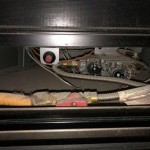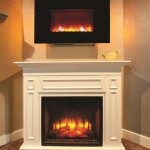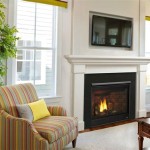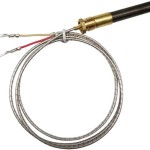Efficient Fireplace Inserts: Maximizing Heat and Minimizing Waste
Fireplace inserts represent a significant improvement over traditional open fireplaces in terms of heating efficiency and environmental impact. Traditional fireplaces, while aesthetically pleasing, lose a substantial amount of heat up the chimney, often resulting in a net loss of heat for the home. An efficient fireplace insert, conversely, is designed to capture and radiate heat, providing a more effective and cost-efficient heating solution.
Fireplace inserts are self-contained units designed to fit inside an existing fireplace opening. They are typically constructed from cast iron or steel and feature a closed combustion system. This sealed design allows for more complete combustion of fuel, resulting in higher heat output and reduced emissions. They can burn wood, gas, or pellets, offering a variety of fuel options to suit different needs and preferences.
Understanding the Efficiency Ratings
The efficiency of a fireplace insert is typically measured as a percentage, indicating the amount of fuel energy that is converted into usable heat. The Environmental Protection Agency (EPA) in the United States sets standards for wood-burning appliances, including fireplace inserts. EPA-certified models are required to meet specific emission standards, ensuring cleaner burning and reduced air pollution. Higher efficiency ratings translate to lower fuel consumption and reduced heating costs. When selecting an insert, it is crucial to consider the EPA certification and the stated efficiency percentage to make an informed decision.
Beyond the efficiency rating, the overall heating capacity of a fireplace insert is measured in British Thermal Units (BTUs). The BTU rating indicates the amount of heat the insert can produce per hour. The appropriate BTU rating depends on the size of the space the insert is intended to heat. For smaller rooms, a lower BTU rating may suffice, while larger open-concept areas will require a higher BTU output for adequate heating. Consulting with a qualified professional can help determine the optimal BTU rating for a specific application.
Fuel Type Considerations
The choice of fuel type significantly impacts the overall efficiency and convenience of a fireplace insert. Wood-burning inserts are a traditional option, offering the ambiance of a real wood fire. However, they require a readily available and affordable supply of seasoned wood. Gas inserts offer greater convenience, as they can be easily turned on and off with a switch or remote control. They also require less maintenance than wood-burning models. Pellet inserts burn compressed wood pellets, which are typically more efficient than traditional firewood and produce less ash. Each fuel type has its own set of advantages and disadvantages, and the best choice depends on individual circumstances and preferences.
Wood-burning inserts, while appealing for their traditional charm, require careful operation to maximize efficiency and minimize emissions. Seasoned wood is essential, as wet or unseasoned wood burns less efficiently and produces more smoke. Proper air control is also crucial, as too much air can cool the fire and reduce efficiency, while too little air can lead to incomplete combustion and increased emissions. Gas inserts, on the other hand, offer greater control over the burn rate and temperature, resulting in more consistent and efficient heating. Pellet inserts offer a balance of convenience and efficiency, with automated fuel feeding and precise temperature control.
Installation and Maintenance
Proper installation is paramount for ensuring the safe and efficient operation of a fireplace insert. Installation should be performed by a qualified professional who is familiar with local building codes and safety regulations. The installation process typically involves connecting the insert to an existing chimney or installing a new chimney liner. The chimney liner is essential for preventing creosote buildup and ensuring proper venting of combustion gases. A properly installed insert will operate safely and efficiently, providing years of reliable service.
Regular maintenance is also crucial for maintaining the efficiency and longevity of a fireplace insert. For wood-burning inserts, regular cleaning of the chimney and firebox is essential to remove creosote and ash. Gas inserts require periodic inspection and cleaning of the burner and venting system. Pellet inserts require regular cleaning of the hopper and auger. Following the manufacturer's recommended maintenance schedule will help ensure optimal performance and prevent costly repairs. Routine maintenance not only extends the lifespan of the insert but also helps maintain its efficiency, ensuring continued savings on heating costs.
In conclusion, efficient fireplace inserts offer a practical and cost-effective way to improve home heating. By understanding the efficiency ratings, fuel type considerations, and the importance of proper installation and maintenance, homeowners can make informed decisions and enjoy the benefits of a more efficient and environmentally friendly heating solution. Choosing a properly sized and installed insert can significantly reduce heating costs and improve overall home comfort.

Fireplace Inserts 5 Money Saving Benefits Efficient Heating

Wood Burning Fireplace Inserts Insert Installation

What Will Make Your Fireplace Energy Efficient

Wood Fireplace Inserts Complete Home Concepts

Fireplace Inserts Butler Pa Martin S And Service

The Best Wood Burning Fireplace Inserts Or Stoves Ecohome

Why A Wood Burning Fireplace Insert Bethesda Md Service

High Efficiency Fireplace Inserts Vancouver Gas Fireplaces

A Step By Guide To Understanding Fireplace Inserts

Ventis Hei240 Wood Burning Insert
Related Posts








